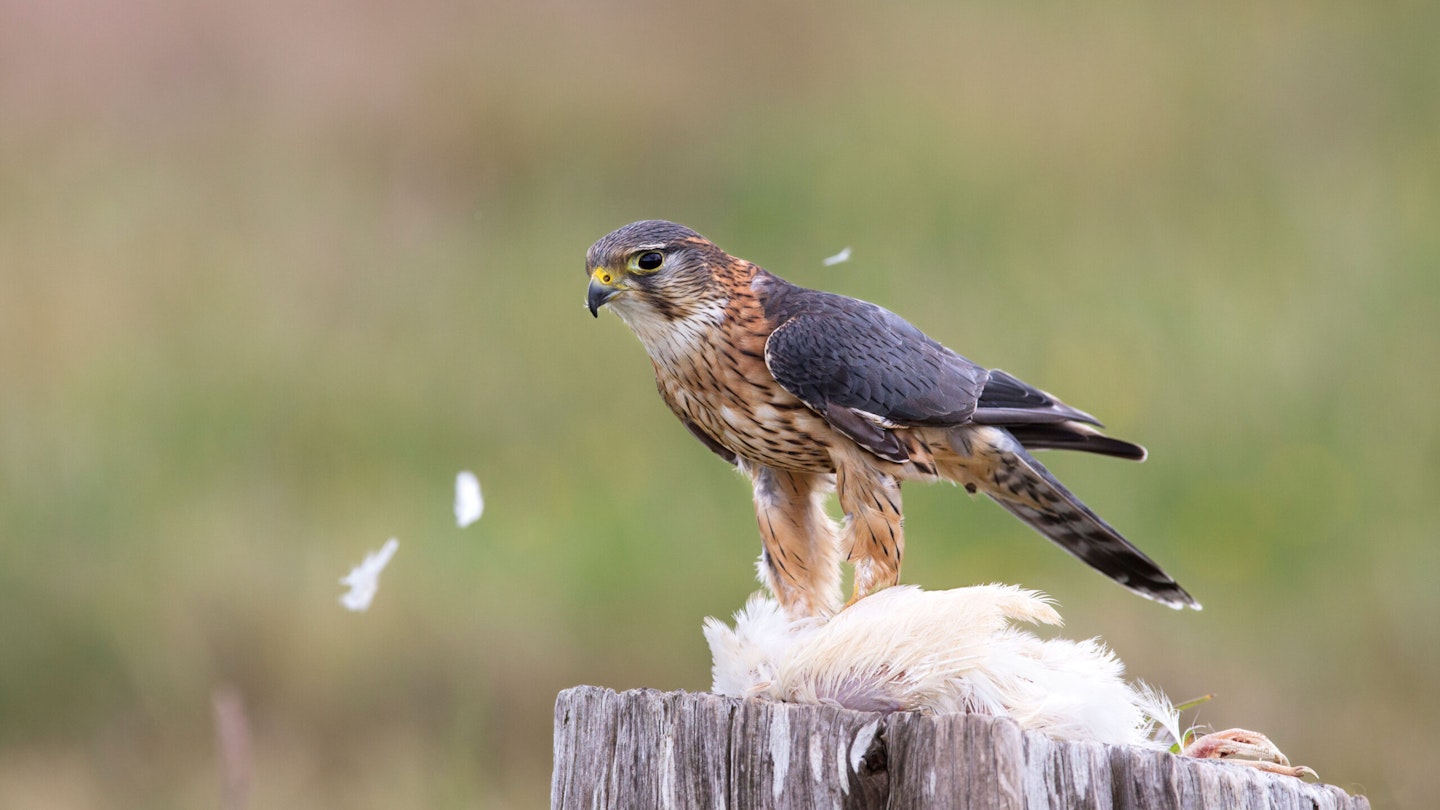The single-minded hunter whose diminutive size belies its might
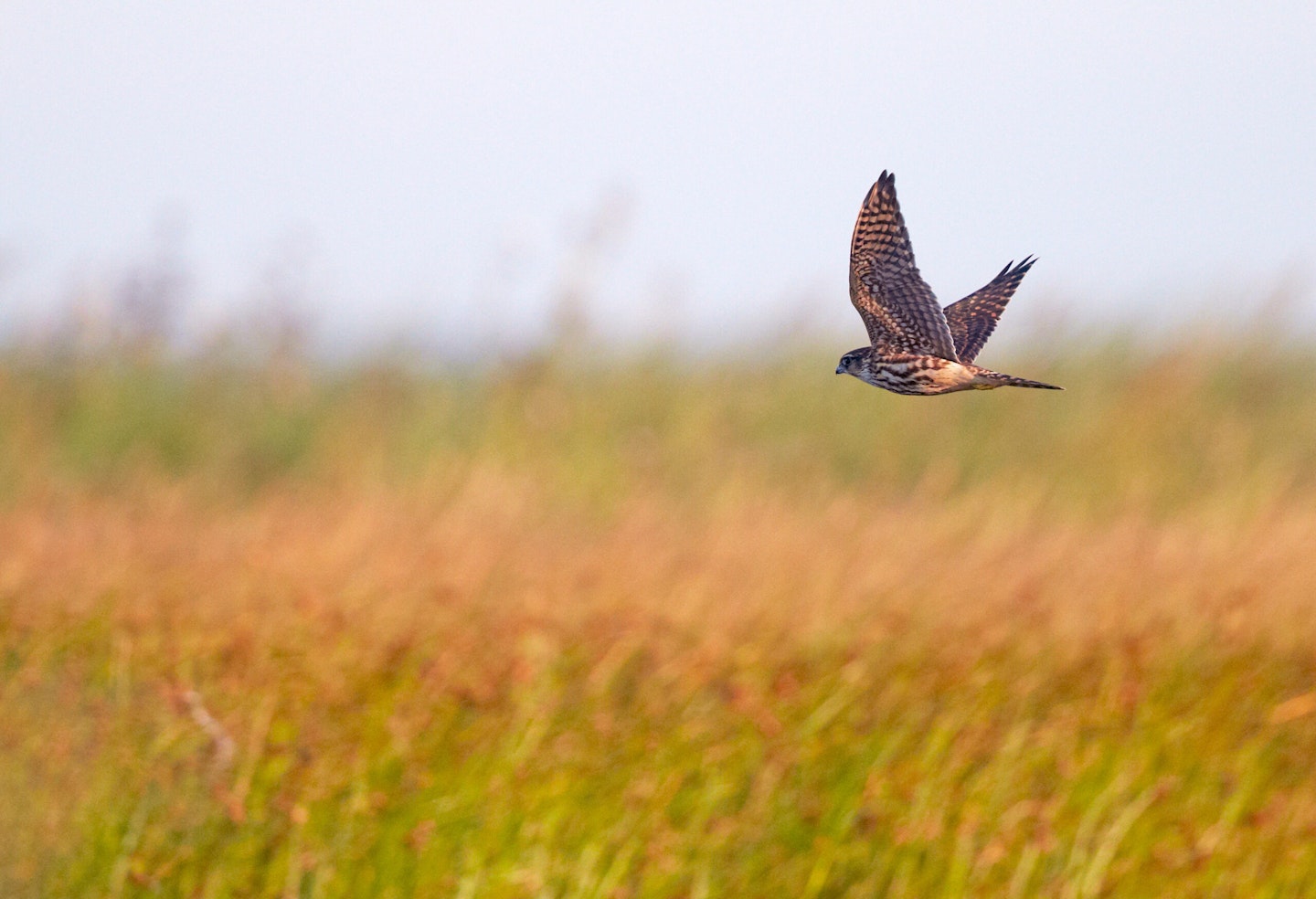
Have you ever heard of a ‘ringing flight’? Apparently, this term describes a death dance between a Merlin and its potential prey. The Merlin locks on to a bird such as a Sky Lark, the lark takes evasive action by flying upwards in a circular path, the Merlin follows and the two spiral upwards into the sky, to be lost to sight. When they are no longer visible, the outcome isn’t known, which makes the experience unusually evocative. Many birders have watched this happen in real life, and most in their hearts would admit to being on the Sky Lark’s side.
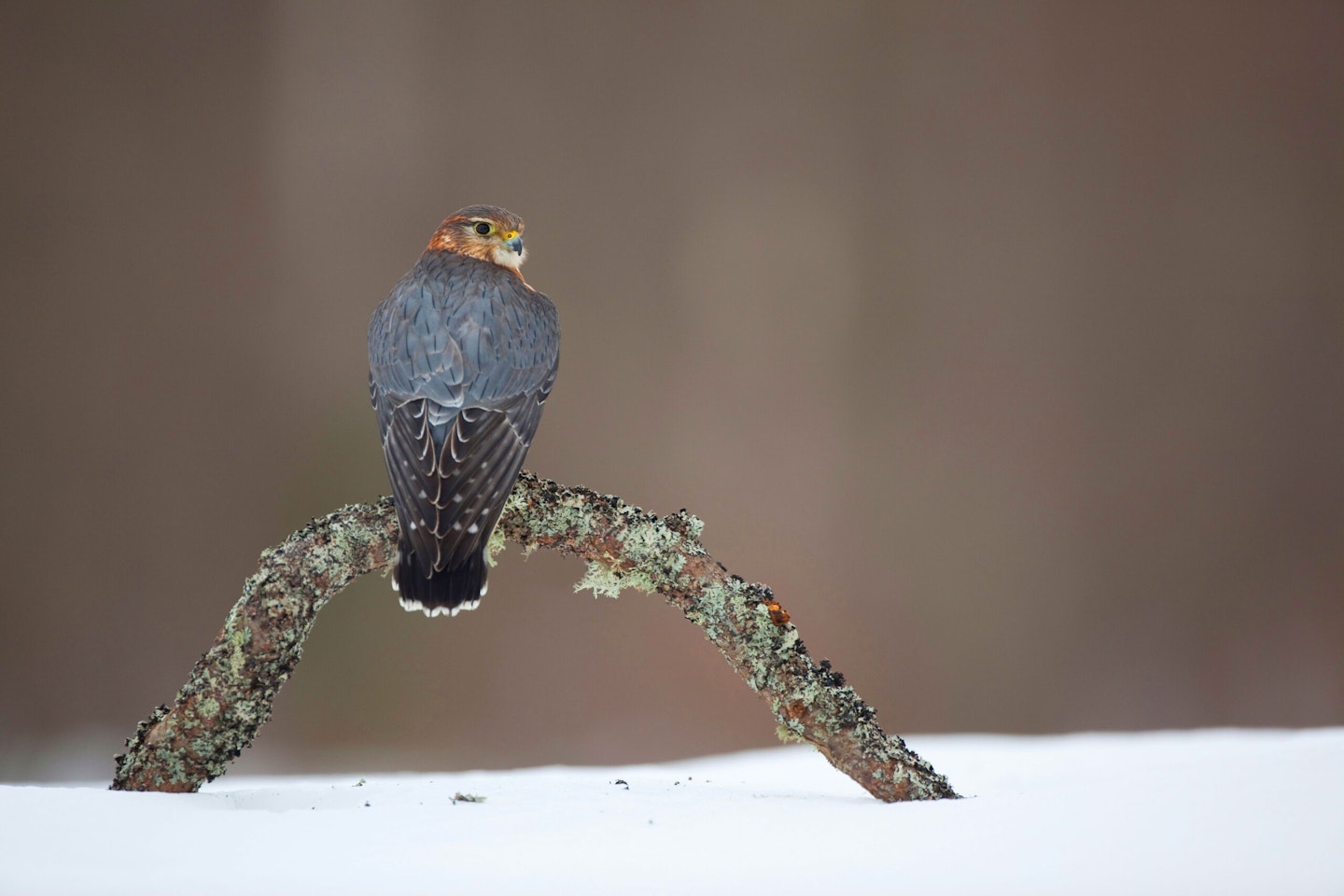
The nagging persistence of the Merlin’s ringing flight, though, is one of this miniature predator’s characteristics. Many times I have seen it in guided missile mode, seemingly locked on to the movements of its quarry, chasing hard, never giving up. Sparrowhawks and Peregrines, the Merlin’s bird-hunting equivalents, don’t seem to chase with the same determination once they have lost the element of surprise. But the dashing Merlin, the quicksilver hunter, full of heart and fire, keeps going. Its single-mindedness is impressive, but sometimes also deadly. More than any other predator, it frequently comes to grief in mid-pursuit, hitting a powerline, or a window, and who knows what else away from the human environment? It is a price it pays for its own doggedness.
The Merlin is our smallest falcon and our smallest ‘bird of prey’ (although we now know that falcons are related to parrots and not to any other raptors!). It is found all over the British Isles, breeding in upland areas, on moorland and other rough, open places. It spreads out over the lowlands, especially coastal areas, in winter, but maintains its predilection for open spaces. It is smaller than the largely mammal-hunting Kestrel, and to the naked eye it gives the impression of being too slight to be a dangerous predator. Yet, on an estuary, the masses of feeding birds might completely ignore a Kestrel or a Buzzard, but when the dashing midget comes into view, there is widespread panic. This is a bird punching above its weight.
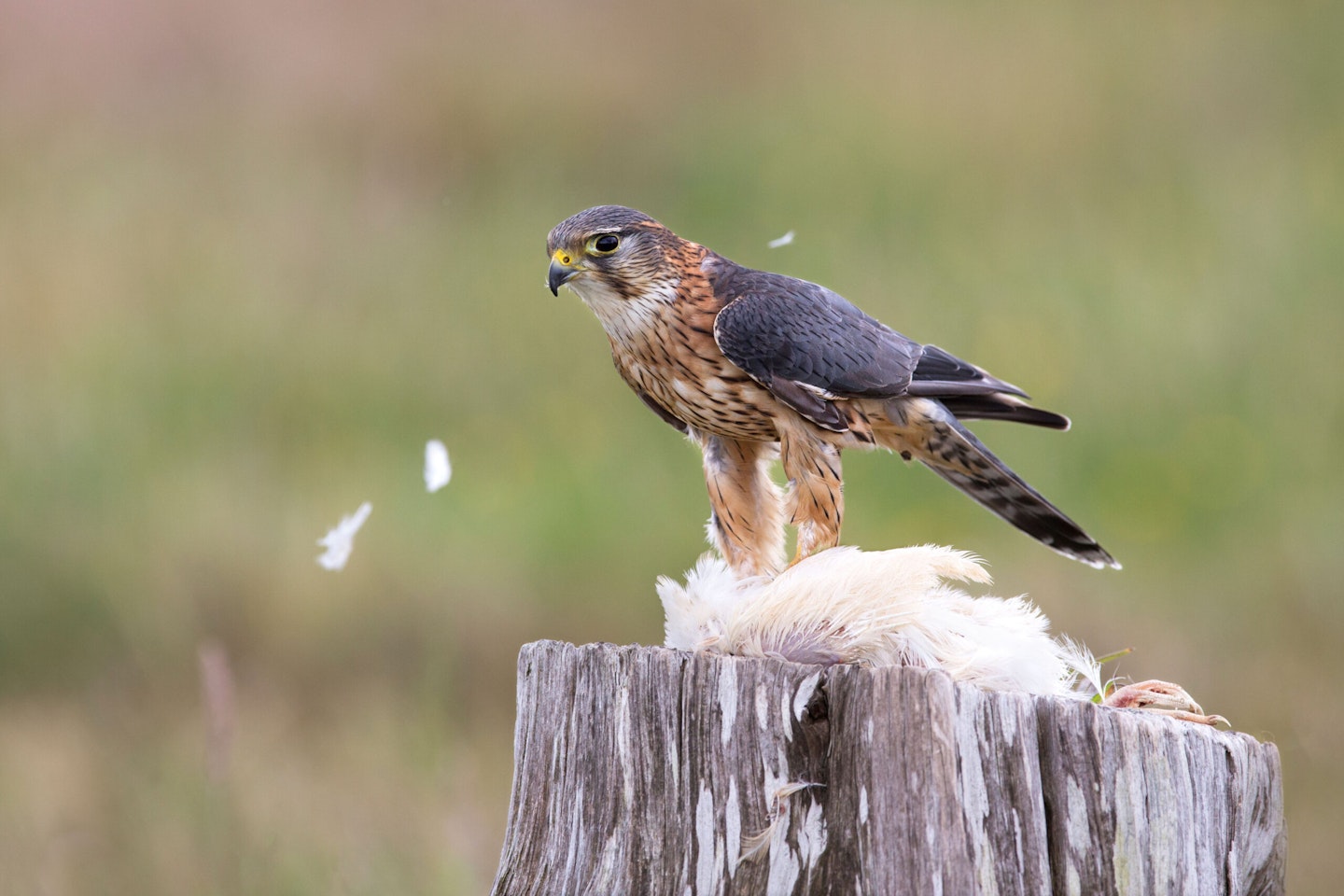
In fact, it rarely attacks any bird heavier than 50g, with its sweet spot between 10g and 40g. In the breeding season, it concentrates all its efforts into a small number of species, mainly songbirds that feed in open areas. Everywhere, Meadow Pipits are its staple diet, while other favourites, predictably enough, include Sky Larks, Wheatears, Pied Wagtails, Chaffinches and Stonechats. The emphasis changes in the winter to small waders, Dunlins being particularly vulnerable. So now we know what Dunlins and Meadow Pipits were put on the Earth for. Studies have shown that, on average in winter, a Merlin needs to eat a couple of small birds a day to survive.
If you are one of those people who loves fascinating but largely irrelevant facts, you will be interested to know that in winter in North America, the Merlin has an apparent taste for waxwings. Over there, Merlins are quite frequent urban hunters, and both the berry-guzzlers and House Sparrows come to grief in this habitat.
One of the interesting quirks about Merlins is that, on a very good day, they don’t necessarily eat everything they kill, but will store some away in caches. These bodies are dumped on the branch of a tree in the territory, or sometimes in the old nest of a crow – something that is also used as a breeding site. Oddly enough, experiments have shown that the birds sometimes forget where they have put these extra corpses, which seems to be something of a waste both for predator and prey.
If you ever had to guess how many breeding pairs of Merlins there were in Britain, I bet you’d be wrong. There are about 1,100 pairs, much higher than most people would surely guess. There is, of course, a lot of suitable habitat, but it is still encouraging to know they are there. There seems to be no estimate available for the winter population; most Merlins evacuate their breeding areas in August or September but remain in Britain. In addition, an unknown number of individuals from outside this country do come to winter here, though.
Merlins typically return to their territories in March, but they are generally late breeders, not normally having eggs in the nest until late April or early May. This suits them fine, since plenty of inexperienced pipits will be around at just the right time. Up until comparatively recently, Merlins in this country almost always nested on the ground, sometimes in deep heather, where they would make a scrape. Others tended to favour a site near the top of the hill, where a bird could easily get a panoramic view of the surrounding country, but at any rate, about 80% of sites were terrestrial. In recent years, however, all that has changed, and today the majority of pairs prefer to use the old nest of a crow up in a tree, usually on the edge of a conifer plantation, offering excellent concealment and protection. Here the female lays up to five of the most beautiful eggs, of an unusual almost reddish-brown. These eggs are laid at two-day intervals, but incubation doesn’t start until the clutch is complete.
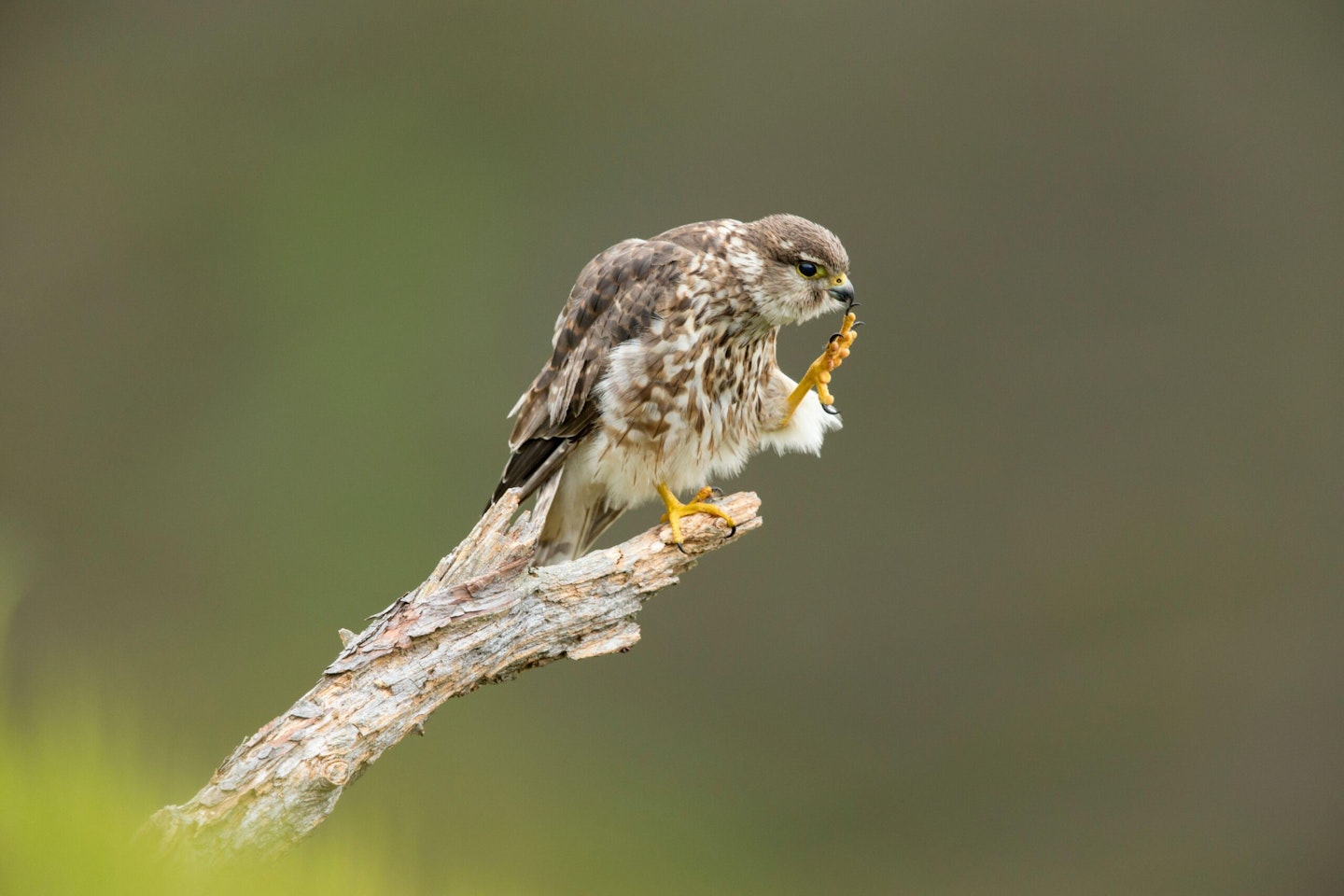
Both members of the pair incubate the eggs, but when the chicks hatch, a very marked division of labour begins, and this is typical for other falcons and other birds of prey. The female remains on the nest while the male does all the very considerable work of catching food for everybody. Not only that, but when the female is sitting on eggs and the male comes in from hunting, he often takes a brief incubation stint, lasting anywhere between 10 and 80 minutes, while she eats the meal he has caught, contributing yet more energy to the breeding attempt. The burden of a male Merlin is a heavy one. Incubation lasts for a month, during which he brings in three meals a day, but his busiest time is when the young have just hatched and are growing fast. For another 30 days, when the female may not help at all with feeding, he needs to bring in anywhere between six and nine meals a day. As if this wasn’t enough hard work, the male may also have to chase crows and other species away from the nest.
It is worth considering the potential toll on the local Meadow Pipits. A Merlin bringing three meals a day for the 30 days of incubation despatches 90 small birds, and if feeding a brood the toll may reach an additional 200 in about 25 days – that’s almost 300 birds before the young Merlins leave the nest. Once the young fledge, they remain on the breeding grounds for a short while before everybody disperses. At this time of year, the young Merlins need to practise their skills, and since birds are always difficult, they sometimes try their luck on insects instead, especially dragonflies. One can easily imagine a particularly determined hawker dragonfly taking exception to being chased, and making its way up into the sky, circling as it does so. It’s a dress rehearsal for the many ringing flights ahead in the life of the young Merlin.
